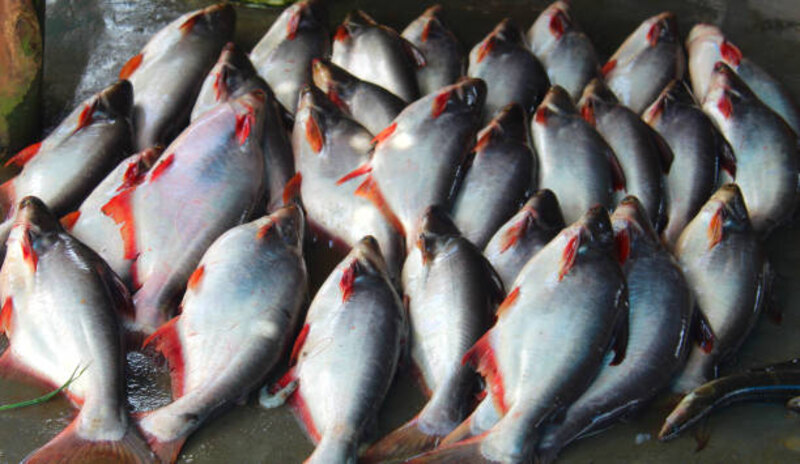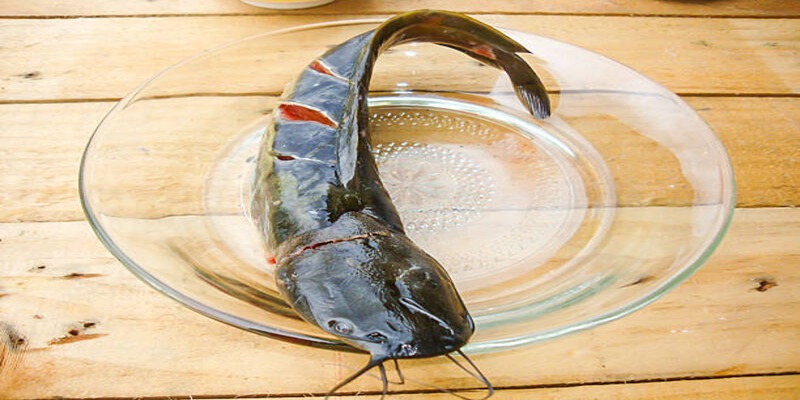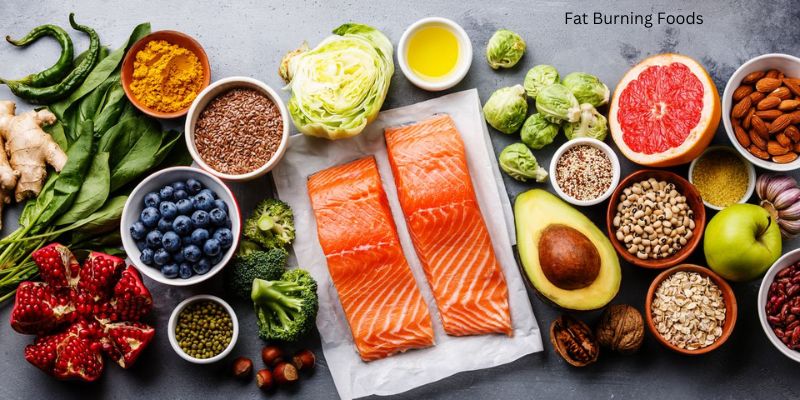Swai, also known as Tra or Basa fish, is one of the most popular and affordable seafood options available today. It's a white fleshed, mild flavored catfish, native to Thailand and Vietnam. While it may look similar to Cod or Tilapia when cooked,
Swai has its own unique texture and flavor. Whether you're looking for a delicious fish dish without breaking the bank or wanting to explore the culinary variety that Southeast Asia offers Swai is definitely worth considering. In this blog post we'll go over all things Swai from nutritional composition and sustainable fishing practices to amazing recipes!
What is Swai fish and where does it come from?
Have you ever heard of Swai fish? This popular fish is usually found in both fresh and saltwater streams, rivers, and ponds across Southeast Asia. Swai fish has become increasingly popular in the United States due to its affordability and mild taste, making it a great alternative to more expensive fish choices.
The fish is low in calories and saturated fats, making it a healthier option without sacrificing flavor. It's versatile and can be baked, grilled, or pan fried, making it a perfect addition to a variety of dishes. Whether you're a seasoned cook or just starting out in the kitchen, Swai fish is definitely worth a try!

Nutritional benefits of Swai fish:
High in Protein:
Swai is an excellent source of lean protein, with 22 grams per 3-ounce serving. This makes it a great choice for people looking to increase their daily intake of protein without gaining unnecessary calories and fat.
Low in Calories &'' Fat:
A 3-ounce serving of Swai contains only 90 calories and less than 1 gram of fat, making it a great choice for people on calorie-restricted diets.
High in Vitamins &'' Minerals:
Swai is a great source of essential vitamins and minerals, including B-vitamins like folate and thiamine as well as minerals like phosphorus and selenium. These nutrients play an important role in maintaining good health and proper bodily functions.
Good Source of Iron:
Swai is a good source of iron, with 1.2 milligrams per 3-ounce serving. Iron helps to carry oxygen throughout the body and plays an important role in maintaining energy levels.
Low Mercury Content:
Fish are often high in mercury due to their exposure to industrial pollutants, but Swai has a low mercury content. This makes it a safer option for people who are concerned about the health risks associated with consuming high levels of mercury.
Rich in Antioxidants:
Swai is an excellent source of antioxidants, which help to reduce inflammation and protect against diseases such as cancer and heart disease. It is also rich in selenium, which has been shown to have anti-inflammatory properties.
Swai fish, also known as pangasius, is a deliciously mild and flaky fish that has become increasingly popular in recent years. But aside from being a tasty addition to seafood dishes, Swai fish is also packed with nutritional benefits. It is a great source of protein, containing virtually no carbohydrates or sugar. Swai fish is also rich in omega 3 fatty acids, which are important for maintaining heart health and reducing inflammation in the body.
The sustainability of swai fish:
Swai fish has gained popularity in recent years due to its affordable price and mild flavor. However, concerns have been raised over the sustainability of this fish species. Swai is predominately farmed in Southeast Asia, which has led to questions about the environmental impact of the farming practices. swai is known to be a species that is frequently mislabeled and sold as other types of fish.
To ensure the sustainability of swai fish, it is crucial that consumers educate themselves on responsible fishing practices and opt for sources that are committed to ethical and sustainable production. By making conscious choices, we can help protect the future of swai fish and support suppliers who prioritize environmental preservation.
How to pick the freshest swai fish:
When it comes to choosing the freshest swai fish, there are a few things to keep in mind. First, make sure to examine the color of the flesh. The flesh should be a light pink or beige color, not a darker pink or red hue.
Next, inspect the texture of the fish. The flesh should be firm and not mushy or slimy. Check for any strange odors. Fresh swai fish should not have a strong or unpleasant smell.
Lastly, consider the source of the fish. Look for reputable fish markets or grocery stores that prioritize freshness and quality. With these tips, you'll be sure to choose the freshest swai fish for a flavorful and tasty meal.
Types of Swai dishes you can make:

Swai fish is a versatile ingredient that can be used in many dishes. From crispy fillets to flavorful curries, there is no shortage of swai dishes you can whip up in the kitchen. For a quick and easy meal, try pan seared swai filets seasoned with lemon and herbs.
If you're feeling adventurous, experiment with swai curry, which combines tender chunks of fish with fragrant spices and creamy coconut milk. For a healthier option, grill swai kebabs and serve them over a bed of fresh greens. Whether you prefer a classic preparation or want to try something new, there are plenty of delicious swai dishes to choose from.
Pros and cons of eating Swai fish:
Like any food, Swai fish has both advantages and disadvantages. Before adding it to your diet, it's important to know the pros and cons of eating this popular fish.
Pros:
- Low in calories and saturated fats
- Rich source of protein, omega 3 fatty acids and other nutrients
- Versatile ingredient that can be cooked in a variety of ways
- Mild flavor that pairs well with a variety of spices and seasonings
- Reasonably priced and widely available
- Sustainable source if responsibly sourced
Cons:
- Contains mercury, so pregnant women should avoid eating too much Swai fish
- Can contain high levels of contaminants such as dioxin
- Some brands have been found to be mislabeled or contain unlisted ingredients
- Has a short shelf life (3 days) so must be consumed quickly after purchase
By considering the pros and cons of Swai fish, you can make an informed decision about whether it is right for your diet.
Swai fish has become increasingly popular as a seafood option in recent years, but like many foods, it has its pros and cons. On the one hand, Swai fish is an affordable and readily available source of lean protein that can be easily cooked in a variety of different ways. It is low in calories and high in nutrients like vitamin B12 and selenium.
Conclusion:
From its origins in the rivers of Southeast Asia to the supermarkets and fish markets around the world, Swai fish has come a long way. With its white, flaky texture and mild flavor, it’s an excellent source of protein with minimal calories and fat. When it comes to sustainability, however, there are some concerns that should be addressed. Still, when properly sourced, Swai can be an environmentally friendly and nutritious staple in your diet. Whether you’re cooking up a classic Thai dish like Pad Cha or something friend like Fish &'' Chips, safe-to-eat, fresh Swai must be your starting point.
FAQs:
What is the cleanest fish in the world?
The cleanest fish in the world is generally regarded as Swai. It is low in contaminants and high in nutrients, making it a great choice for those looking for an affordable yet healthy seafood option.
Is swai fish clean or unclean?
Swai fish is generally considered to be a clean and safe option for consumption, provided that it is sourced from reputable suppliers. However, due to the potential for contaminants like mercury in some swai sources, it's important to do your research before purchasing or consuming this type of fish.
Is swai fish better than catfish?
The answer to this question depends on personal preference. Swai fish and catfish both provide a mild flavor and flaky texture, but they differ in terms of nutritional benefits. Swai is generally considered to be the healthier option since it is low in calories and fat while being rich in omega 3 fatty acids.




